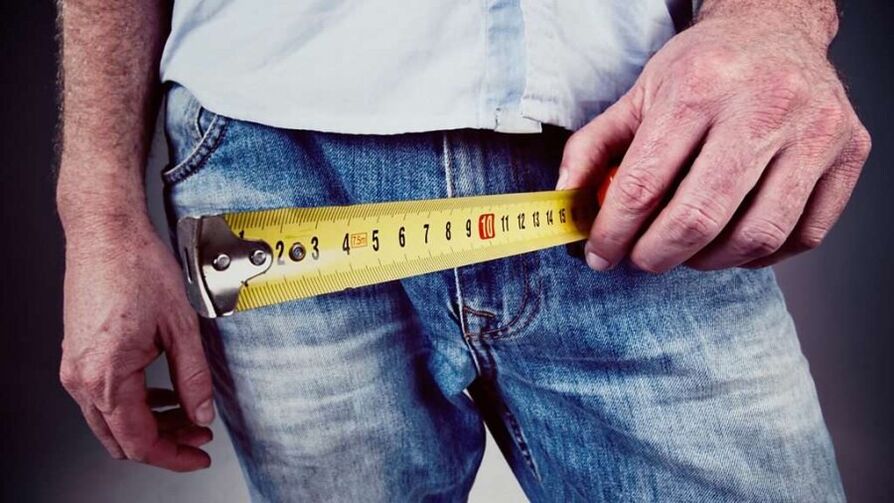
Sexual arousal in men is a complex process. These include processing external information (what the stronger sex sees and hears), psychological readiness for sex, anticipation of pleasure, and the body's immediate physiological response. It is useful for every woman to know how this process occurs in men and how to speed up arousal.
Where does it all begin?
The beginning of excitement is caused by a variety of sensory stimuli. The smell of a girl, her kisses and touches, her external appearance (especially without clothes) stimulate centers in the brain that transmit a signal to the genitals through the nervous system.
Hormones are involved in this process. Dr. John Bancroft, an American sexologist and part-time 4th director of the Kinsey Institute for Sex Research, claims that blood testosterone levels determine a man's level of excitability. This was the conclusion reached by a study whose results were published in the Journal of Endocrinology in the article "Endocrinology of sexual arousal".
The result is an erection. The erectile tissue of the penis is filled with blood. The muscles contract and prevent venous drainage, causing the penis to become hard, enlarge (on average 3-4 times) and pulsation to be felt. Often such a reaction occurs within a few seconds of sexual stimulation. Interestingly, during foreplay an erection may weaken and then become stronger again - this is completely normal.
The British Journal of Urology International published a study conducted among 20, 000 men. The size of their genitals was measured. Men from all over the world took part. As a result, it turned out that the average penis size at rest is 9. 16 cm and when erection is 13. 12 cm.

There are three types of erections. One of them - nocturnal (spontaneous) - occurs without sexual undertones. The other two accompany sexual arousal in men.
Psychogenic (or psychological) – occurs against the background of excitation of centers in the brain. Nerve impulses are transmitted to the spinal cord and then through the nerves to the reproductive system.
Reflex – occurs as a result of touching the penis. Since this organ has many nerve endings and its skin is extremely sensitive, even light touch can cause irritation and blood flow to the penis.
In addition to the erection, men's pulse quickens, breathing quickens and blood pressure rises (as in the female half of the population). The scrotum thickens and may become denser and the testicles rise. The upper body turns slightly red. A lubricating fluid is released that facilitates the passage of sperm through the canal.
What turns men on?
In addition to a beautiful image (a naked woman or dressed in lace lingerie, dancing, lying seductively, etc. ), foreplay plays a big role. Men also need it to make their excitement as strong as possible. The surest way for a girl to turn a guy on is to stimulate his sensitive areas. These include:
- head, neck and chest;
- stomach (especially the lower part) and back;
- Genital organs and surrounding areas.
In most cases, foreplay begins with kissing. Just one passionate kiss from a girl can cause an erection and put a man in the right mood. There are many nerve endings on the lips, and he also feels his partner's sexuality and expects imminent sex. At this time, the back of the head area can be stroked with your hands; This area is also very sensitive. Many men like their earlobes to be kissed and bitten, but you have to be careful with this, because there are those who categorically do not like this process.
The lower abdomen is ideal for stroking before oral sex (from the navel down). The back is suitable for erotic massages. By the way, this doesn't just work with your hands, but also with your lips, hair and bare chest.
Everything is clear with the genitals - any movement in this area is welcome and causes sexual excitement in men. You should be alert for sudden movements; Men may fear for the security of their dignity. Blowjob, manual techniques - all this maximizes the partner's desire. Surrounding areas include the inner thighs, which can be stroked with the hands.

Representatives of the stronger sex get excited quite quickly. However, they need more time (from several hours to a day) to rest and fully recover after sex than women because the process costs them a lot of energy. Therefore, repeated sexual arousal may not occur quickly in all men and this should be treated with understanding.
Sexual arousal in men
When you see a partner who is sexually attractive to you, you become first psychologically and then physically aroused. But how this happens is a little-known question for most people. What does science say? She views arousal as a physiological sexual response.
Or rather, its first phase. That is, a whole range of processes. They do not have any gender differences: increased breathing and heart rate, the appearance of muscle tension, increased blood pressure, increased salivation, dilated pupils, the appearance of redness and goosebumps, and nipple erections.
With sexual arousal, psychological behavior, changes in gaze and voice. This is due to the release of hormones into the blood, which act on the body like a drug. In men, there is also an erection of the penis, a rise of the scrotum to the pubic bone, its swelling and thickening, and the release of pre-ejaculate to moisten the head.
In women, there is additional lubrication, thinning or, conversely, enlargement of the labia majora (depending on whether the woman has given birth or not), erection of the clitoris, lifting and enlargement of the uterus, tension of the pubic muscles and enlargement of theLabia the length of the vagina.
By the way, if in rare cases reddening of the skin is observed in men, in women there is a rush of blood not only to the clitoris and labia, but also to the chest and back. In some women, this redness is so noticeable that the area between the breasts, shoulders, and neck may even turn scarlet during and after orgasm.
Why are there so many reactions? They are associated with a blood rush that the body carries out in order to achieve greater sensitivity of the sexual organs and readiness for the second phase in the cycle of sexual reactions - sexual intercourse. After the arousal phase there is: a plateau phase (sexual intercourse), an orgasm phase and a phase of completion of sexual reactions.
The excitement phase may not occur. This is often more of a physical problem than a psychological one. Erectile dysfunction (impotence) is a disease in which the strength of an erection is not sufficient for sexual intercourse. There are three types of impotence: psychological, organic and mixed.
In most men, erectile dysfunction is associated with the organic form due to various diseases. The most common causes for this are cardiovascular diseases, diabetes and hormonal disorders. The quality of blood supply to the organs and hormone levels are disrupted.
With some diseases, bad habits, taking certain medications, especially those that affect the central nervous system, and a sedentary lifestyle, blood circulation in the pelvic organs is weakened, which is why the main reaction of sexual arousal in a man does not occur - the filling of the erectile tissue with blood.
Drugs, alcohol and smoking affect not only the physical but also the psychological state, which is why impotence goes from an organic form to a mixed form. You cannot delay this situation; it is easy to correct at first. You need to see a urologist or sex therapist.
Men become sexually aroused much more often than they reach orgasm. Long-term abstinence can cause serious damage to the body in general and the genitals in particular. Women's favorite motto "We inspire you and don't let you" works well in moderation - such entertainment should not be overused. Sexual dissatisfaction significantly affects not only physical but also mental health. The man becomes nervous, angry, irritable. A regular orgasm is an important condition for the normal functioning of the body. And there is practically no difference in how it is obtained - during sex or during masturbation.
















































































